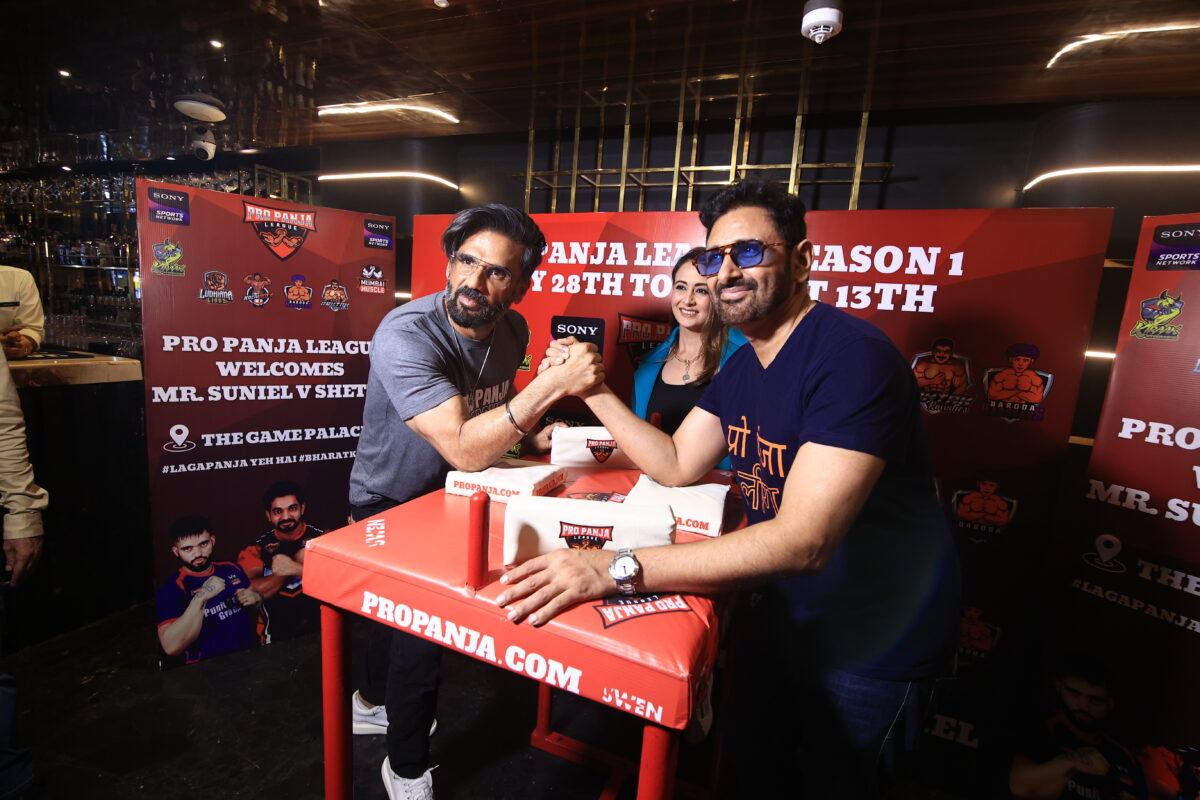The inaugural edition of the Pro Panja League (PPL) which started on a high note elevated to the next level when the legendary Bollywood actor, Suniel Shetty, came on board as a minority investor.
The competition due to its ability to present a winner in a very quick manner managed to captivate the audience. Panja, the indigenous sport which the majority of the population played throughout India, has been revived and has kept the viewers on the edge of their seats due to the enthralling season of the Pro Panja League.
The first-ever season of the PPL saw Kochi KD clinch the trophy by beating Kiraak Hyderabad 30-28. In the league stage, Kiraak Hyderabad topped the points table with 137 points.

At a press conference in Mumbai, in the previous week, the Panja league’s owners, Mr Parvin Dabas and Ms Preeti Jhangiani, along with Suniel Shetty addressed the media. At the same event, SportsMint Media had the opportunity of exclusively interviewing Mr Shetty. In this interaction, the 62-year-old actor spoke about the debut season’s success, potential investors for the next season and how his business acumen will help the competition in the forthcoming seasons.
1. From a shareholder’s point of view, how would you rate the first season’s success of the Pro Panja League?
I think the first season with Sony grew by multiple folds, the buzz was there which was very important. I think the determination and passion that the husband and wife have for the sport is something that has brought it here and I don’t see any reason why it can’t be pulled up further in the coming years. It’s an exciting sport, it has quick results and when anything is quick in its result, you have people who get into it.
2. As an investor, what are your plans for the next season?
The second season will be bigger than the inaugural season, scale-wise, having a larger talent hunt, getting the right investors and owners on board, individuals investing into the company who are well versed with the sport, getting the right financial support and growing it just like kabaddi has grown it. How better can we present the sport technically? What can technique do to enhance the sport itself like when Kabaddi came the first year it was different, the second year was different and now Kabaddi has become huge, it’s insane. The level of fitness and energy is humongous, so I think that’s what we would like to bring in only to make it better not that the best efforts are not being put in now, but you know every year with a new technique it can only get better.
3. How will you sell PPL to other potential investors?
Purely from a point of view of TRP, purely from a point of view of growth. There’s a definite growth pattern that we see. There are many more participants, who want to be a part of it, which means the growth of the league itself, and the growth of the individual players. So, everything about this competition can be glamorized and sold, beautifully.
4. As an entrepreneur yourself how can you use your experience for the development of PPL?
I think to do leagues, be it interschool, intercollege, interuniversity, or state-wise, the aim should be to keep people engaged and excited about the competition throughout the year, and it should never be that once the league is done, people would forget. There should be a continuous effort, which is already happening at the grassroots level like doing events at historic locations, thereby getting far more eyeballs. From the minute we get the right partners on board, it will grow and spread; that’s how startups grow from the very beginning. It’s the investors who come up with ideas that help us grow.
5. Considering your love for indigenous sports, will you be investing in some other homegrown sports?
Yes for sure, but what is it that is going to be as exciting as PPL is the question and I love this because the Panja competition also shows strength and mental toughness. It’s not just about physical strength. It’s also about that mentality that players might think Should I? Shouldn’t I? Should I? Shouldn’t I? Can I hold it or not? and that is the beauty of this sport here. I would say it’s one kind of a combat sport only and I’ve seen that in MMA and I’m seeing that here too.










